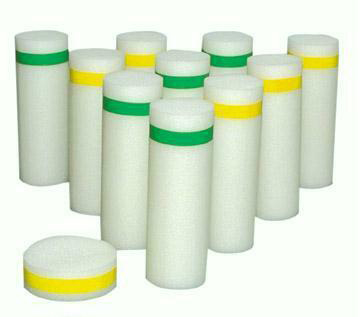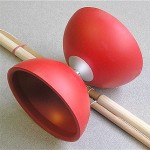Setup and Equipment:
- Players are divided into two teams.
- Each team has a different colored jersey.
- The wall for each team has a gym mat in it, this is the “Cooler” for the opposing team.
- Six foam targets are placed at each end of the gym (inside of a hula hoop). It works best if the team with the blue jerseys are retrieving the blue targets, etc.
- The area between the wall and the endline is the designated safe area for opposing players attempting to retrieve their pin. Only one player from the opposing team may be in the safe area at a time.
- The Object of the Game: Players attempt to remove the pins from the opposing team’s endline and return them to their own endline.
- The Game is Over: when all of the pins have crossed the line and are in their team’s safe zone.
Guidelines:
- Students are safe on their own side.
- If a player crosses the center line they may be tagged by the opposing team.
- Tagged players are frozen until a teammate reaches them and grabs their hand.
- They both are allowed free walk-backs to their side, as long as they are holding hands and have their hands raised in the air.
- Players that reach the opposing team’s targets are safe as long as their hand is on the pin and they remain behind the line in the safe zone.
- If the player removes their hand from the targets, the opposing player may tag them and the target stays at that spot. The tagged player goes to the “Cooler”.
- As soon as the target leaves the safe zone line the player may be tagged. The target is set down at this spot. The player who was carrying the pin, then returns to their side.
- Only one player at a time may be in the safe zone. If two players are in the safe zone at the same time, they both must go to the “Cooler”.
- A player that is tagged while carrying a pin must set the target down at that spot and go to the “Cooler”.
- Targets may never be thrown.



